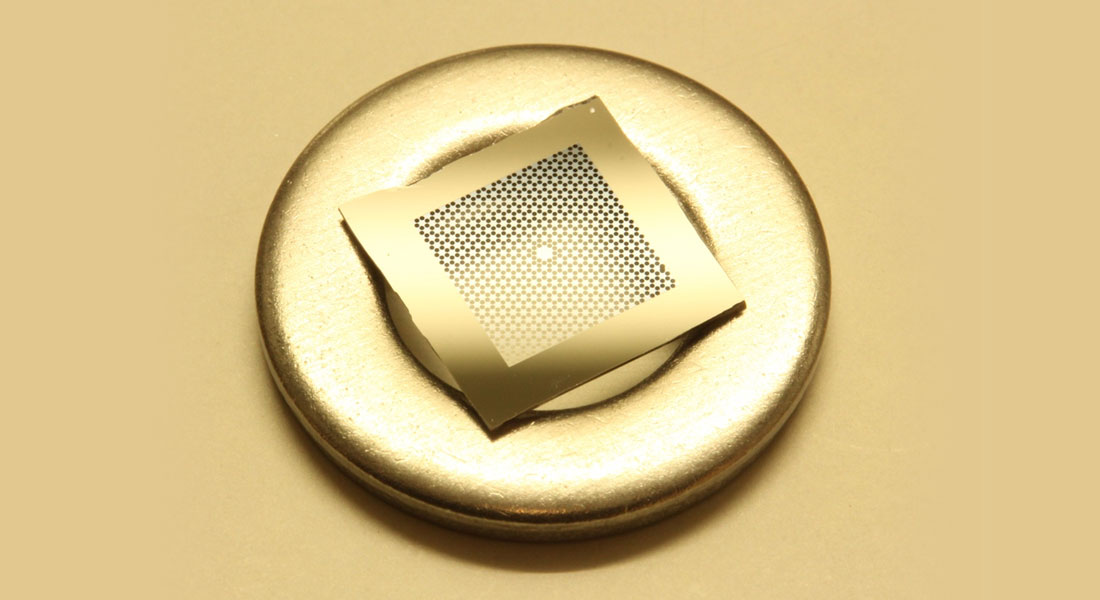Ultracoherent mechanical devices
is at the heart of each of our experiments, functioning as an ultracoherent quantum system with built-in isolation from the environmental. Normal crystals are a collection of atoms with a repeating pattern, imbuing the material with special characteristics.

Similarly, a phononic crystal is a fabricated object with a repeating pattern that gives it a particularly useful property – a bandgap that forbids the propagation of motion at certain frequencies. This allows us to ‘trap’ a mechanical resonance within the phononic crystal, creating a well-packaged quantum system.
Landmark achievements were obtained with the first generation of membrane designs [1-4]. Nevertheless, new designs are being explored which improve upon old design parameters, or even increase functionality. For example, our new low-mass designs are significantly better for sensing applications such as MRFM [5].
Another new design results in higher quality factors and a larger and cleaner bandgap, which has made it the ideal choice for adding metal films for electromechanical functionalization [6]. Additionally, we are exploring having multiple resonators in the same membrane [7], as well as an entirely new phononic membrane design which exhibits topological protection for propagating oscillations.
Although the quantum regime focuses on small displacements of the mechanical resonators, rich physics is being uncovered when the membrane is excited to large amplitude oscillation. The resulting nonlinear effects are found to be relevant for parametric transducers, and necessary to understand for force sensing applications. Additionally, we have found to use nonlinear data to directly extract key figures of merit for dissipation dilution in an experimental setting [8].
